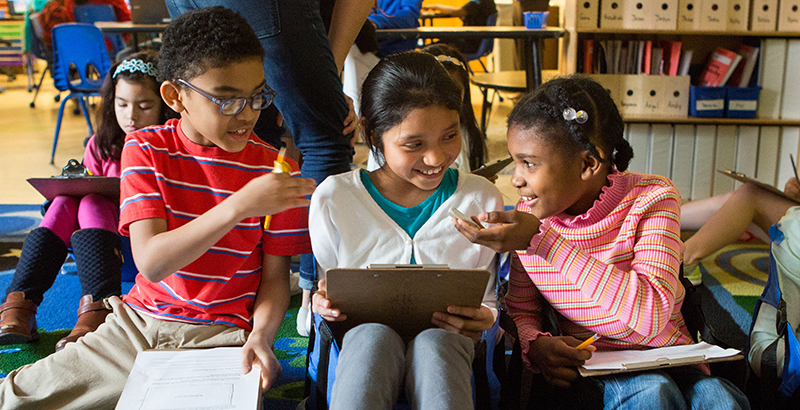Commentary: In Thinking About America’s Education System, the Most Important Question Must Be, ‘And How Are the Children?’

This year has barely begun, and already it has been riddled with unprecedented political drama. The people charged with leading this country have dug in their ideological heels, literally shutting down our nation as a means to advance their political agendas. The saga continued as we all listened to the president’s State of the Union address. Among the all-too-familiar rhetoric from both sides of the aisle, I tried to keep steady through talk of building walls, failing infrastructure, and economic uncertainty — all paramount issues. But I could not help but think about a Kenyan greeting that I heard many years ago: “kasserian ingera” — literally translated, “and how are the children?”
In this traditional greeting, the appropriate response would be “sapati ingera,” or “all the children are well.” Unfortunately, I believe we cannot in earnest give this reply. As an education advocate and committed community builder, I am keenly aware of how “unwell” our children have become as they try to navigate an educational system that leaves so many behind. I am both saddened and in awe of the nearly 13 million American children living in poverty as they make their way into classrooms each weekday. And though we cling to the American story of promise and possibility for all who work hard, we are, in truth, failing to provide the educational springboard for young people to succeed. A report by TNTP called The Opportunity Myth, which gives a glimpse into the state of the nation’s classrooms, makes this clear.
As I listened to the state of our union and economy, I was hard-pressed to separate the growing need for a skilled workforce from the reality that this workforce is being developed in grade school classrooms each day. As students are leaving high school and heading to college, 1 in 4 will need at least one remedial class to catch up on learning they should have gained prior to high school graduation. The data also show us that students who start college behind often do not earn a degree. So, as we lift the dream of college access for better economic opportunity, many students will leave college saddled with their share of the nation’s $1.5 trillion student loan debt without ever completing a bachelor’s.
As parents, students, and community members, we should take seriously the question, “How are the children?” and begin to get to the root of college and career readiness, which we at TNTP believe is grounded in the classroom experience. In our research, we gleaned that most students, and particularly low-income students, students of color, and English learners, are not provided with access to four key resources that can increase student achievement: grade-appropriate assignments, strong instruction, deep engagement, and teachers with high expectations for student success. The research also revealed that when students, even those who struggle, are given access to all four resources, they thrive.
Although we cannot solve all the problems in our education system overnight, there are some clear takeaways from The Opportunity Myth that can improve the lives and futures of millions of students and families right now. Children have big dreams for their contributions to the workforce, and if we prioritize quality, grade-appropriate instruction, we can create engaging environments that will equip our students to meet their goals.
As parents, family members, teachers, school leaders, and community members committed to ensuring that our children have access to the resources they need to succeed, we must actively address the opportunity gaps that exist.
Our team at TNTP has begun to organize support for student access to great classroom experiences and the four resources. We see this effort as a way to both build a stronger community and change policies that will affect student experience at scale. Here are the first steps to change:
● If you’re a parent or family member, understand your child’s classroom experience and engage his or her teachers around access to the four resources. Talking to teachers or school leaders about your child’s academic goals and success indicators can help you ensure that your child stays on track during each school year. Here’s a tool that outlines some steps you can take now.
● Know the state of education in your state. It’s your right as a parent, guardian, and/or community member to know how your school, district, and state are performing. This report card will give you the information you need to be able to effectively advocate for your child and the children in your community.
● Lastly, join us! Commit to dismantling the opportunity myth.
Change will happen only if you help. Together, we can build a groundswell of support to improve the state of our classrooms for our future job creators and world problem-solvers.
Kenya Bradshaw is vice president of community engagement at TNTP.
Get stories like these delivered straight to your inbox. Sign up for The 74 Newsletter

;)